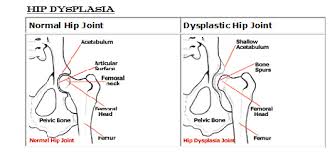So you have a new puppy, congratulations!
You have been a responsible puppy owner and have made sure that your new friend is up to date with vaccinations, microchipping, flea and worming treatments, good quality puppy food and is fully insured.
Then at around 6 months of age your beloved new friend and family member has started limping.
You talk to your friends and they say it’s just growing pains, you ask google and google says its elbow or hip dysplasia that requires very expensive surgery. You enter a state of despair and panic, such a young dog how could this be, what does this all mean?
We at Midwest Veterinary Centre would like to think you would ask us before delving into the dangerous world of the internet, but we know we are only humans and understand a click is much easier than driving to the clinic. However, save yourself the anguish and book in a consult or chat to one of our experienced Veterinary Surgeons over the phone.
There are several reasons why your puppy may be lame.
And we agree that pelvic or elbow dysplasia is high up on our list, but it’s important to differentiate this from a sprain/strain, fracture, limb deviation, foreign material in the foot pad, or sometimes they can be lame due to other inflammatory causes that affect the joints (e.g. immune mediated disease or infection). A lot of these issues can be ruled out at the time of consult or with radiographs (x-rays).
If, after radiographs we diagnose your pet with elbow or hip dysplasia then there are several ways to tackle this issue.
Treating elbow or hip dysplasia in growing dogs
Depending on the severity of the disease we may recommend referral to an orthopaedic surgeon who is able to perform further imaging of the joints using a CT scanner (which is basically 3dimensional radiographs), who may elect based on these results to perform surgery.
- If your dog is diagnosed with elbow dysplasia then surgical treatment usually involves arthroscopy, this is where they place a small camera into the elbow joint and scrape out the bits of bone/cartilage that are moving about in the joint causing pain.
- If your dog is diagnosed with hip dysplasia (where the femoral head (ball part of the hip) isn’t sitting in the acetabulum (the socket part of the hip) properly, usually due to poor conformation) then this can be treated in several different ways surgically and depends on the severity of the disease and the individual orthopaedic surgeon.

Sometimes surgeries such as, Triple Pelvic Osteotomy (TPO) or Double Pelvic Osteotomy (DPO) are recommended, these involve altering the shape of the pelvis to combat the disease. If the subluxation is too severe then sometimes a Total Hip Replacement (THR) is recommended, or salvage procedures such as a Femoral Head and Neck Excision (FHNE) may be performed (where the femoral head is removed).
However, we realise these procedures are not cheap (hopefully your puppy is insured so this isn’t an issue) and some puppies can be managed relatively well with a special joint diet (here we use Royal Canin Mobility diet), restricted exercise, anti-inflammatories and joint supplementation.








Leave A Comment